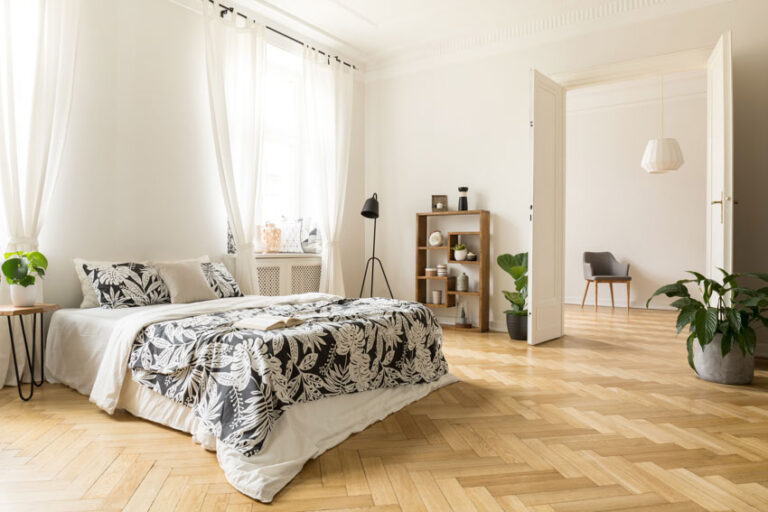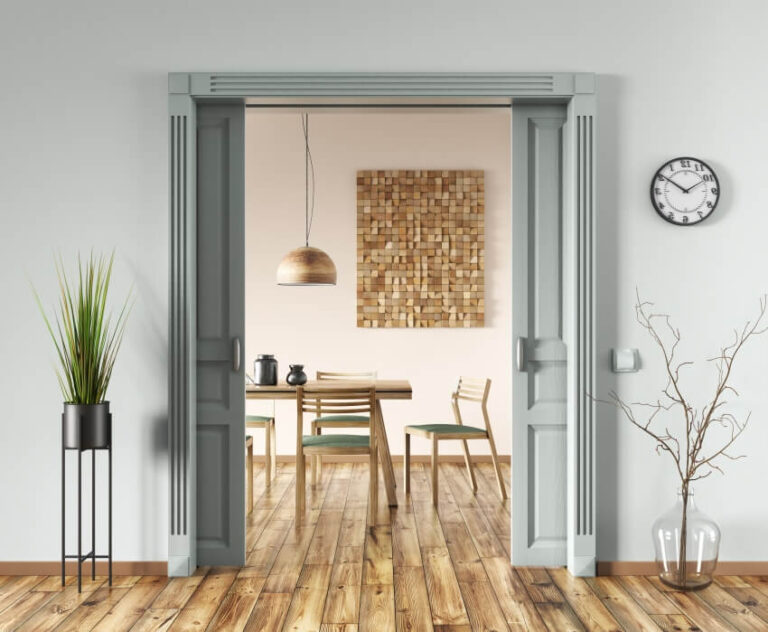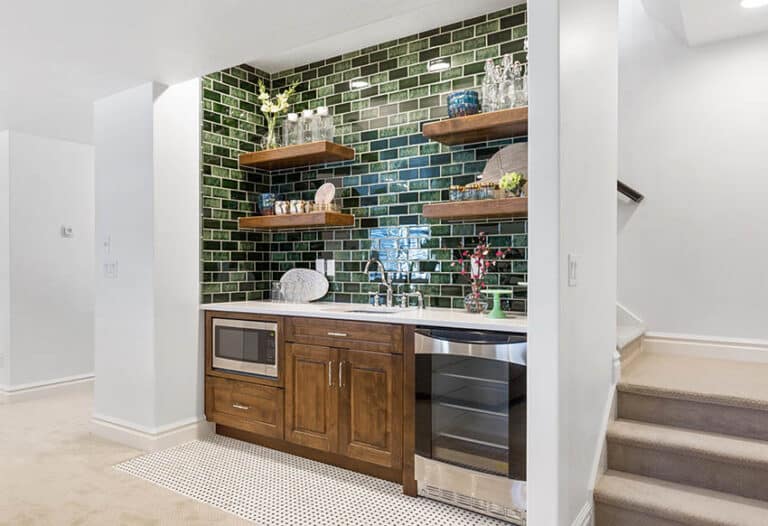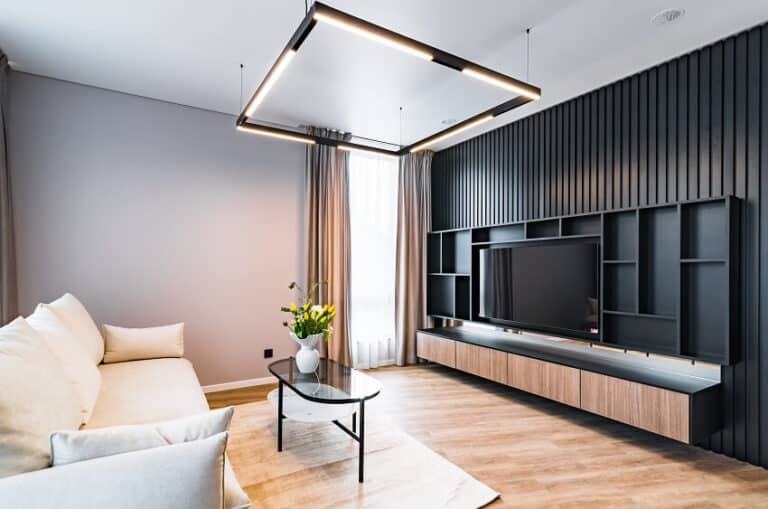Frosted Glass Front Door (Design Types)
Your front door serves as a welcoming entry, a reflection of your style, and a safeguard for your home. In selecting the perfect door, practicality, aesthetics, and security are key. Consider a frosted glass front door, a popular choice for its distinctive blend of function and design.

Frosted glass, ideal for both commercial and residential applications, is created by getting a clear sheet of glass and acid etching or sandblasting the material, leading to a pitted appearance on one side of the pane. The glass becomes translucent when the light passes through the surface, getting scattered away. To make sure that this is a good option for your home, you need to explore the advantages you’re about to get.
Types of Front Doors with Frosted Glass

Here are some frosted front door options you can explore to help you decide.
Entrance With Frosted Window Panels
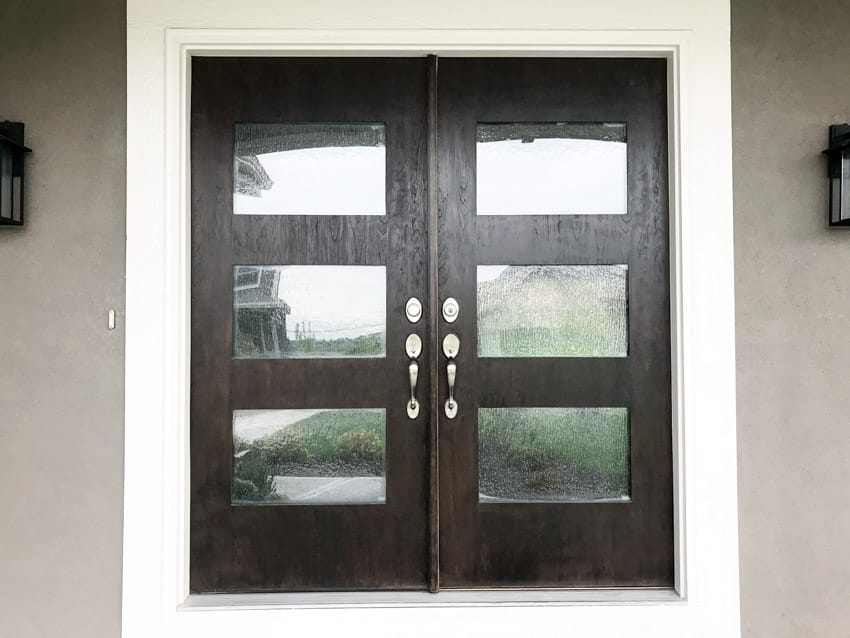
A front door with frosted panels can serve as a decorative entryway in your home. These panels can come in single, double, and triple units, so you have the option to choose the number of panels you want to use for your front door.
The more frosted panels you integrate into your front door, the more natural light you allow to enter your home, resulting in a brighter and airier welcoming space. Since it’s frosted, you can be guaranteed that your privacy is preserved, regardless of the number of panels you use.
Single Panel Frosted Accent Glass
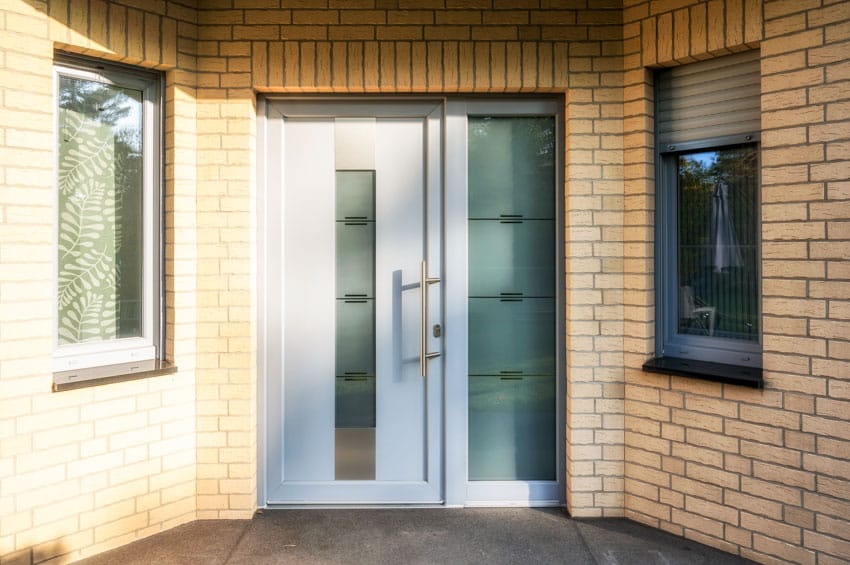
When you choose a front door with a frosted single-panel, you get a full-size panel or a small one to install with a wooden door.
A full-size frosted door can guarantee maximum natural light to come in. A small frosted panel is typically placed in the upper part of the door for the natural light to hit the floor.
You can also get frosted front doors with sidelights, which are extra panes next to the door. These can provide more light and enhance the look of the entryway design.
Traditional Door with Sandblasted Glass
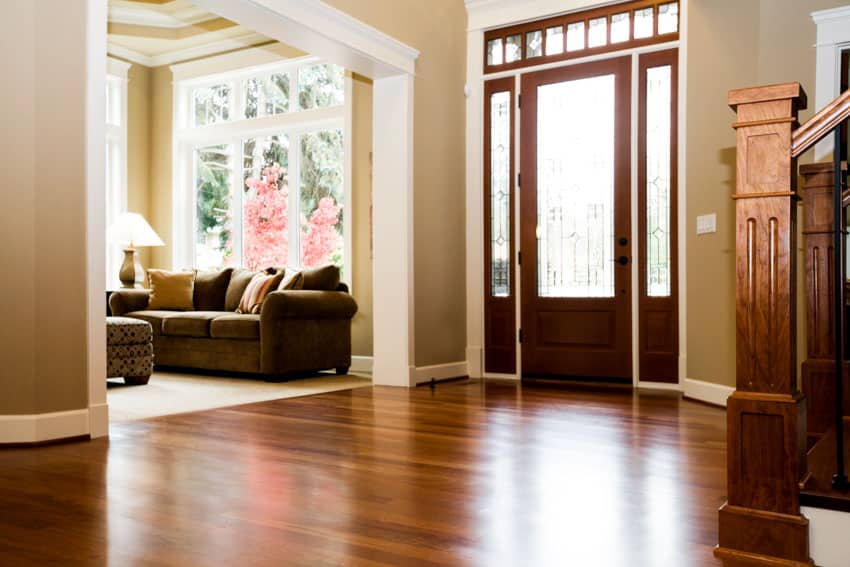
A traditional front door will most commonly use wood for its frame. You can go for a simple farmhouse-style door with a clear or natural finish to showcase the wood’s knots and grain patterns. A solid wood door frame can be a great support for frosted glass.
This style can add character to this traditional look and give it a bit of flair rather than just settling with the traditional wooden door.
Modern Door With Frosted Panels

When it comes to modern and contemporary styles, the color white is a prominent color, along with geometric shapes. If you want a modern frosted front door, you get a solid wooden door frame you can paint with bold modern colors like black, royal blue, yellow, and pink.
You can then integrate frosted doors in a unique geometric shape to add charm to the entire ensemble and soften the edgy and modern style. If you don’t want an eye-catching door, you can go for neutral colors, such as tan and brown. And finally, the cherry on top is a non-traditional door handle.
Double Doors with Etched Window Glass Treatment
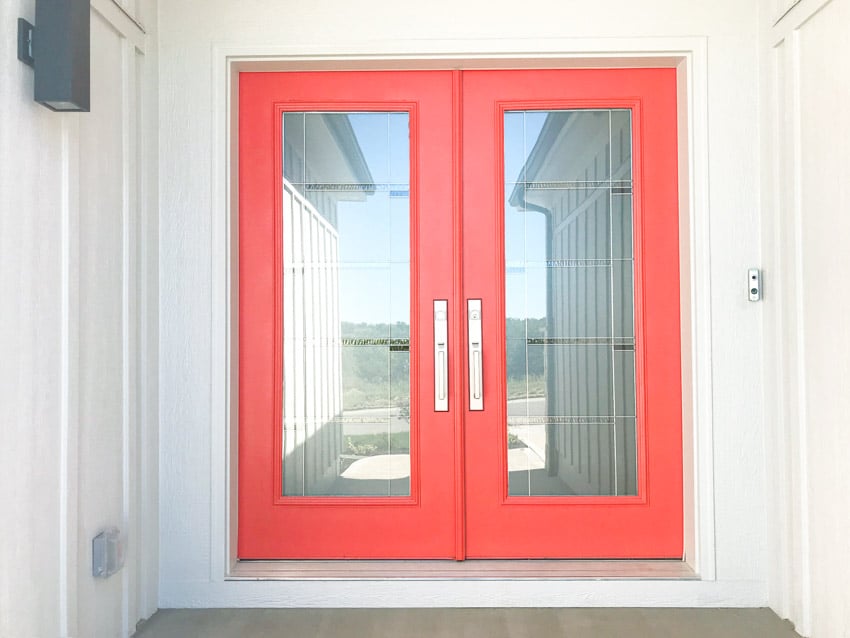
If you have enough budget and space to accommodate it, you can choose double front doors, instead. This option means that you will need to use more materials to build the two front doors. You also have the option of going for a swinging door or a sliding door, depending on your preference.
Many types of sliding doors are made from glass to add elegance to the look. You can even build the double doors to be fully made of this material except for the borders. Or you can choose to install a small panel at the top part of both doors.
DIY Frosted Panes
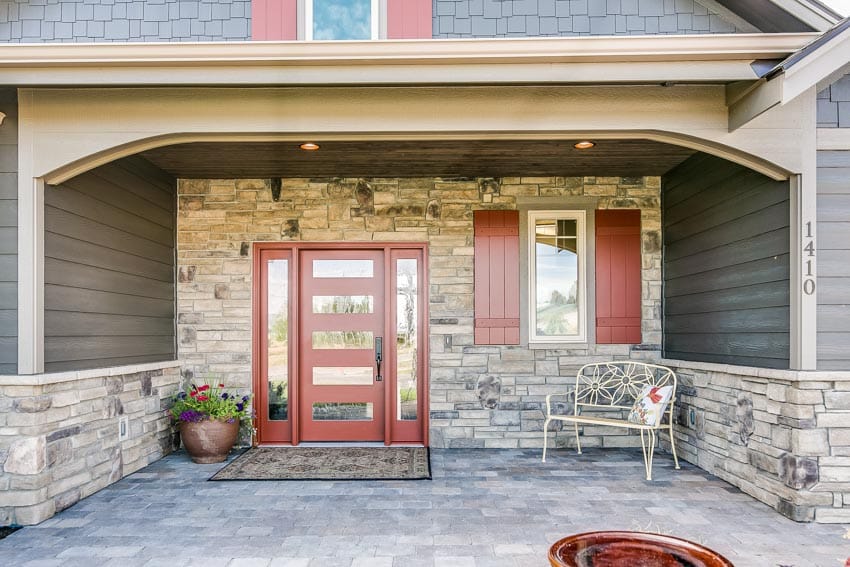
When you choose to DIY your front door using the frosting technique, you need to at least know how to do it or what techniques to employ. You can purchase ready-made stained glass inserts, which you just need to pair with clear panels and install with a wooden frame.
You can also choose to sandblast or use spray paint to accomplish this effect. The advantage of this is you get to control how you want your front door to look, but the downside is that you need to be knowledgeable about building one, and you need enough time to build it.
You can also choose window film or etching cream to frost the see-through panels on your door. See the process of frosting doors below.
Door with Glazed Glass Film
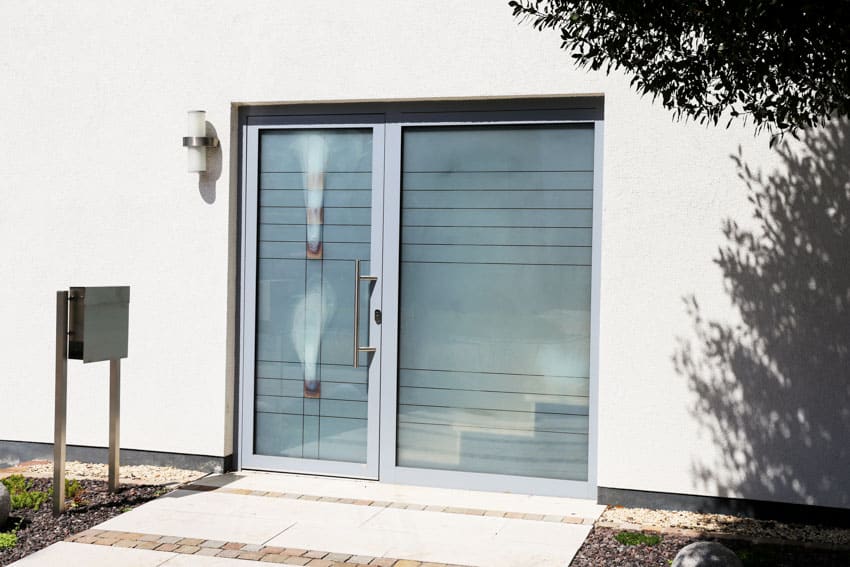
You can also use a frosted film to help you achieve this specific look. Ideal for renters and homeowners alike, an adhesive window film can turn a clear surface into a frosted type by trimming a piece of this film and gluing it over the surface to extract the bubbles that can mimic the frosted look.
Make sure that the adhesive backing is properly installed by using a flat tool similar to a credit card.
Glass That Changes From Clear To Frosted
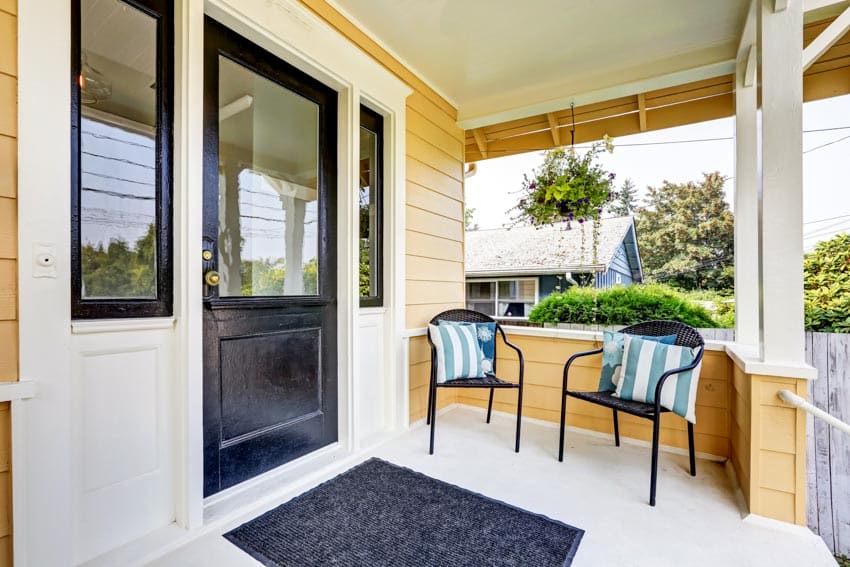
With the improvement of technology throughout the years, homeowners are provided with more options in many aspects at home. One technology you can take advantage of is switchable technology or PDLC technology, which is responsible for turning clear glass into a frosted one with just a click of a button.
This particular technology is used to promote privacy whenever needed and is accessible just in seconds. To make this possible, a switchable film or self-adhesive retrofit film can also be used. It is a convenient option, and you can choose if you’re unsure about the material for your front door.
Impact Resistant Glass
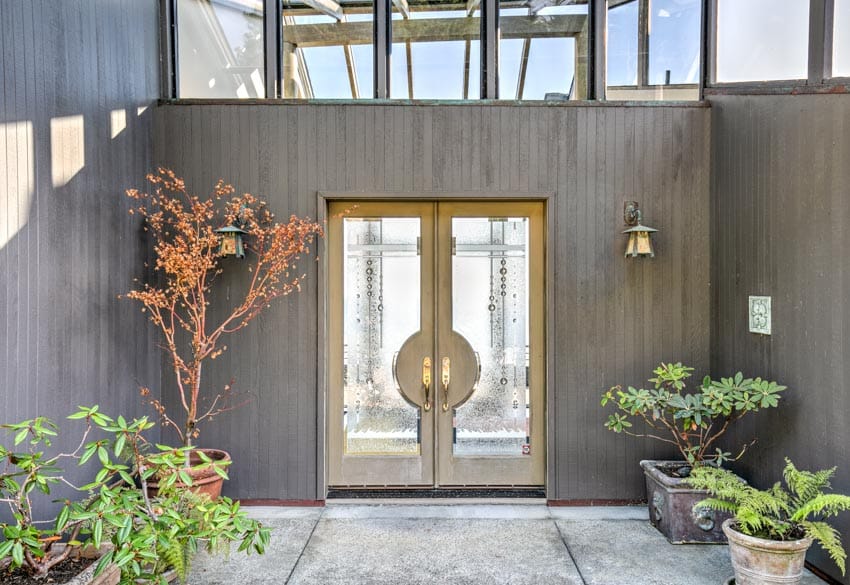
Most are made with a special laminated coating. Make sure though that the installation is done properly to make the most of this material.
Privacy Glass
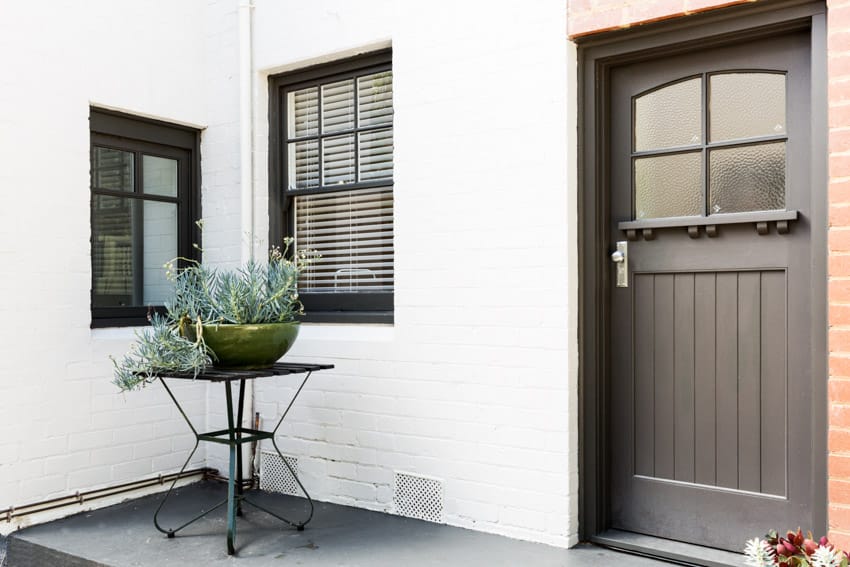
A privacy panel uses textured glass that has been treated or manufactured to include a pattern that distorts the view. This makes it difficult for someone outside to see into the home, providing the occupant’s privacy while allowing natural light to enter.
There are various methods to achieve this texture, like acid etching, sandblasting, or using a mold during the glass-making process. Textured privacy glass can come in various designs, from simple frosted or opaque finishes to intricate patterns that can complement the home’s aesthetic. It can also vary in the level of privacy, from lightly textured glass that offers a minimal amount of privacy to heavily textured glass that is impossible to see through.
Types of Frosted Applications For Glass
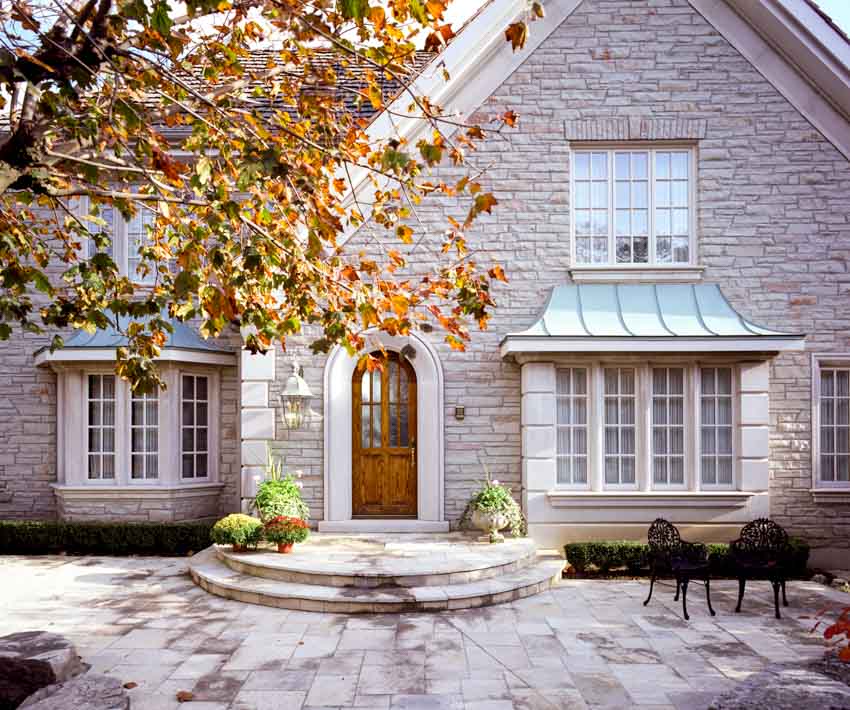
If you’re choosing to DIY your frosted front door, there are many materials you can match the glass with to reinforce durability and contribute to its aesthetics.
Looking at your options will be the best place to begin. Here are some of the common types of frosted glass you can use for your front door when you decide that this is what you want to have:
• Sandblasted: The frosted effect is accomplished by spraying sand over the surface to create light damage on the transparent surface. The frosted effect looks less uniform and rougher compared to acid-etched glass.
• Acid-etched: With this type, acid is used to etch the surface with a heavily blurred effect. The aesthetics look more uniform and smooth compared to the sandblasted variety.
• Satin: This type offers a more transparent look compared to the first two, with the glass only looking slightly blurry and can still look through.
Door Materials to Use With Frosted Windows
There are other types of frosted glass, but these are only a few of the most commonly offered products on the market. If you’re building one, you can easily match them with the following materials:
• Wood: This is the most common material used for doors and is compatible with a variety of home styles. Energy-efficient types of wood doors can come as solid, paneled, and engineered and even come from different types of wood like beech, elm, oak, and mahogany.
• Steel: Strong and durable, this material is usually used as an inner frame of the door, similar to foam and wood. More affordable and easy to paint, it is guaranteed not to crack or warp.
• Wrought Iron: If you choose a highly decorative front door, incorporate it with wrought iron and glass. It is ornate in aesthetics and easily delivers traditional and contemporary styles. While it can be pricey, this option is sturdy and highly customizable.
• Aluminum: Custom-ordered, this material can cost more, but it also doesn’t rust and doesn’t need painting. You can use this material in a sheet and install it over a foam or inner wooden core.
• Composite: Weatherproof and moderately priced, this is made from wood, foam, UPVC, and glass-reinforced plastic.
• Fiberglass: Maintenance-free and tough, this material can easily mimic wood, withstand humidity, and is affordable.
Benefits of Choosing A Frosted Window Door
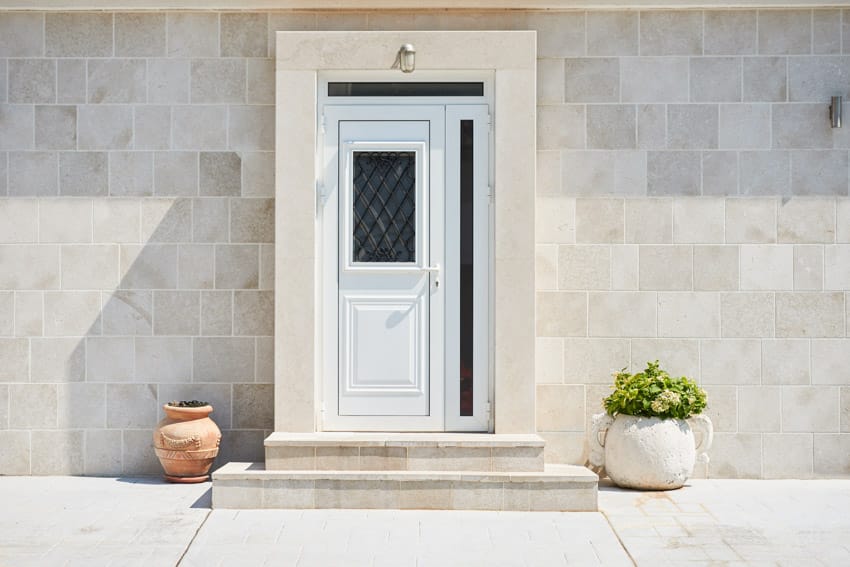
Getting a frosted glass front door for your home will provide you with the following advantages:
• Promotes privacy: Unlike clear type, the frosted one won’t provide a translucent view of the inside of your home, making sure that unwanted people won’t see your home.
• Adds a touch of drama: The frosted look offers a flair of drama that interior designs pay special attention to. Since your front door provides guests with the first impression of your home, a bit of drama to draw attention to your door’s unique look can be a good thing.
• Highly customizable: It can easily be used together with other structural elements like metal and wood to create the decor style you want to achieve.
• Showcases a sleek and modern style: It creates a sleek and stylish look that offers a contemporary vibe that can stand out.
• Offers an airy and more “open” feel: More than just installing as a front door, frosted panel doors also work wonderfully for indoor entrances, improving the lighting and ventilation inside the home, giving the airy and more open feel.
• Enhances energy efficiency: Since the addition of frosted types of glass front doors enhanced the lighting condition in the home, this will also result in a reduction in energy consumption. These doors are the greener option and have less reliance on artificial lighting.
• Low maintenance: Since doors with this material do not rust or corrode, they are easier to maintain. You also won’t have to worry about scratches and stains since they are resistant and so you get a free pass from the expensive and time-consuming process of their upkeep.
These doors can be an excellent part of your home for these reasons. These doors add flair and personality to the aesthetics of your home before you can even enter it. Putting in a good impression this way can attract positive attention to you and your home.
Where To Use Doors With Frosted Panels
There are also different ways the frosted panels can be integrated into the door. To decide how to choose the ideal opaque door for your home, you need to consider the following factors:
• Size of the home: Whether you choose a frosted single or double door, the dimensions need to be proportional to the size of the home. See our guide to front door sizes for more details.
• Decor style you want to have: Frosted types of glass doors add flair to a home, and if you’re going for a minimalist style home, this might not be the best option to consider.
• Budget for the project: Particular types of frosted panel front doors cost more because they have better features to offer, so you also need to take this into account.
What Kind Of Glass Goes In A Door?
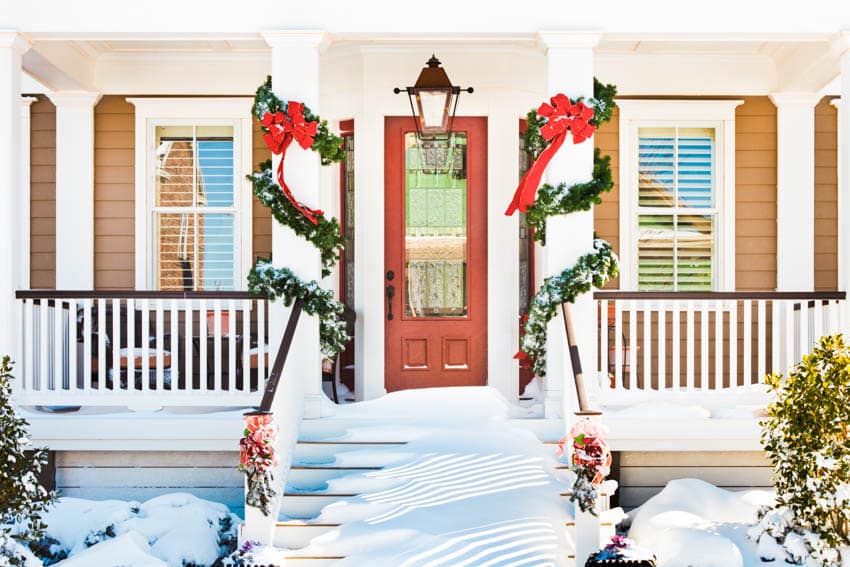
The front entryway garners the first and last impression that guests would have. It is important to make sure that even with just your front door, you can induce the vibe you want to inspire.
One of the ornate materials you can add for aesthetics is glass. There are several that are worth considering and taking note of. Here are some variations you should look into.
• Clear: Considered the most common option for front doors, this material offers the most natural light in the home but also offers very little privacy. When installed in the front door, it becomes a decorative element perfect for modern-styled homes.
• Textured: This type refers to the ones with a nice variation that lets you keep everything inside private. Textured glass is another great option, not just for privacy but also for aesthetics. Some variations include rippled, frosted, water glass, glazed, and beveled.
• Stained: Adding colors to the entryway would be an interesting option if you want something unique and quirky. This material is usually paired with wood to showcase a vintage look.
• Toughened: Popularly used for automobiles, buildings, and partitions, this material is designed to be resistant to breaking.
• Insulated: If you’re looking for protection against cold weather, this type is ideal. It’s made from two or more sheets tightly sealed together. Dry air is then inserted in between.
How to Choose the Best Glass for Your Door?
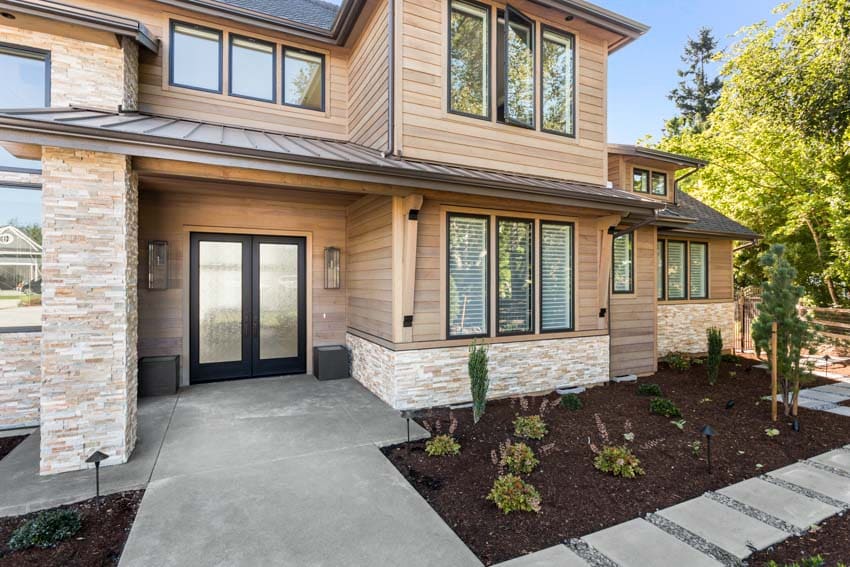
There are several factors to consider if you are looking for the ideal front door. These include:
• Safety and security
• Aesthetics and appearance
• Functionality and efficiency
• Maintenance
How to Frost A Door
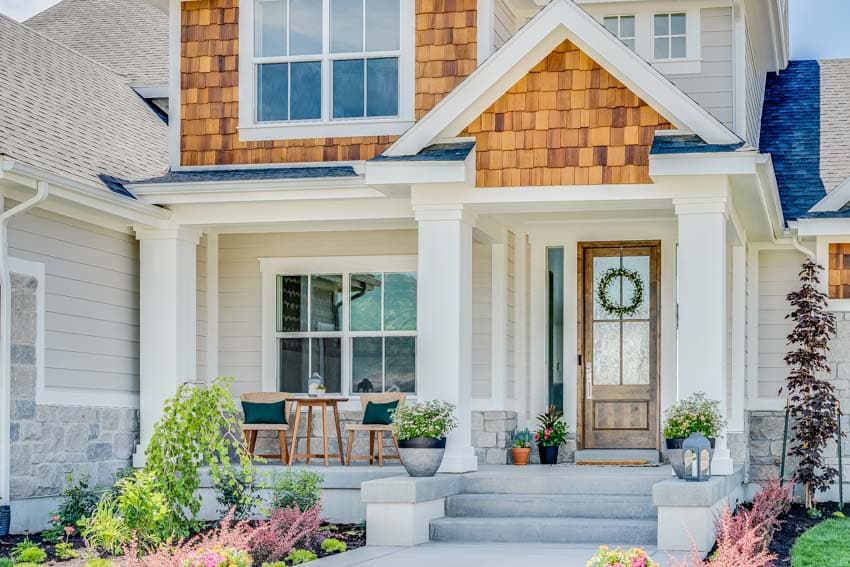
If you’re going to DIY your frosted glass front door, you need to know how to create this effect. There are several ways you can do this, including the following:
• Frosted glass spray paint: Manufacturers have created a special spray paint you can use to create the frosted look just by spraying it on clear see-through material. Simply tape off the edges and the area you don’t want to be affected before spraying it on the glass.
• Window film: You can apply the non-adhesive film on the clear surface just using static cling.
• Removable window adhesive: Carefully stick a frosted contact paper to a surface and slowly peel off the film to complete its application.
• Etching: A glass-etching cream can permanently create a frost effect. Ideal for smaller surfaces, this cream is easy to apply, but you just have to make sure that it won’t make contact with your skin while you work with it.
If you want a step-by-step guide to frosting doors, here are five simple steps to follow, which you can apply to both etching cream and spray paint.
Steps for Frosting Glass
• Step 1: Clean the surface with a paper tower/squeegee and a window cleaner, and dry it with a clean cloth
• Step 2: Stencil a pattern using stickers and painter’s tape
• Step 3: Cover the surrounding areas with plastic bags and drop sheets so that they won’t be accidentally sprayed on or applied with the cream
• Step 4: Wear a protective give before doing any work, like goggles and protective gloves (Especially when using etching cream since it is harmful to the skin)
• Step 5: Frost the material (Spray on your panels or apply the cream on the surface)
Are Doors Made Of Glass Easy To Break Into?
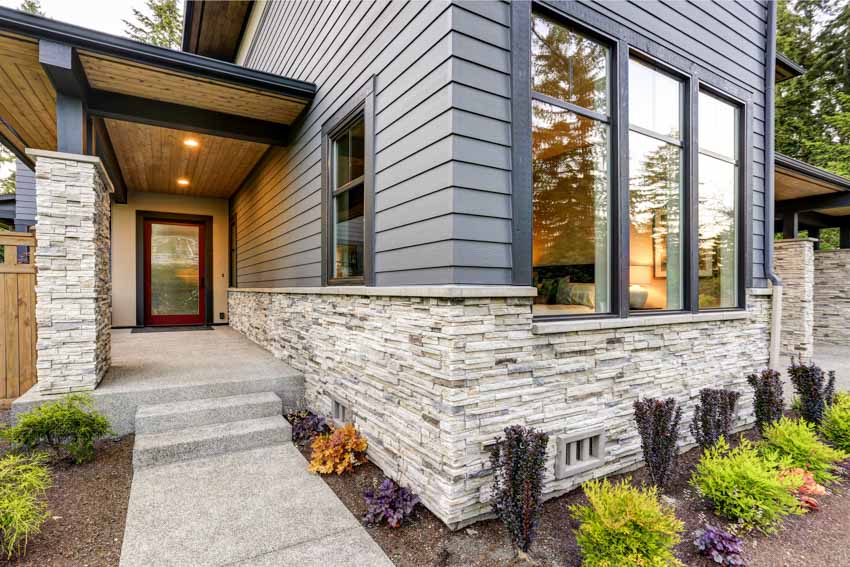
No, these doors are not easy to break into, not like what you usually see in movies and TV. If this is your key concern when considering a frosted front door, rest assured it won’t break just by punching on it. Of course, you will need to take into account the type of material used on the door.
These are made of tempered glass, which is way more difficult to break than the one used in the types of windows. This is also known as double-strength glass or safety glass due to its durability.
This type is typically an eighth inch thick compared to the 3/32 inch, often used for windows. This thickness makes it much more difficult to break.
How to Secure Doors with Glass Material
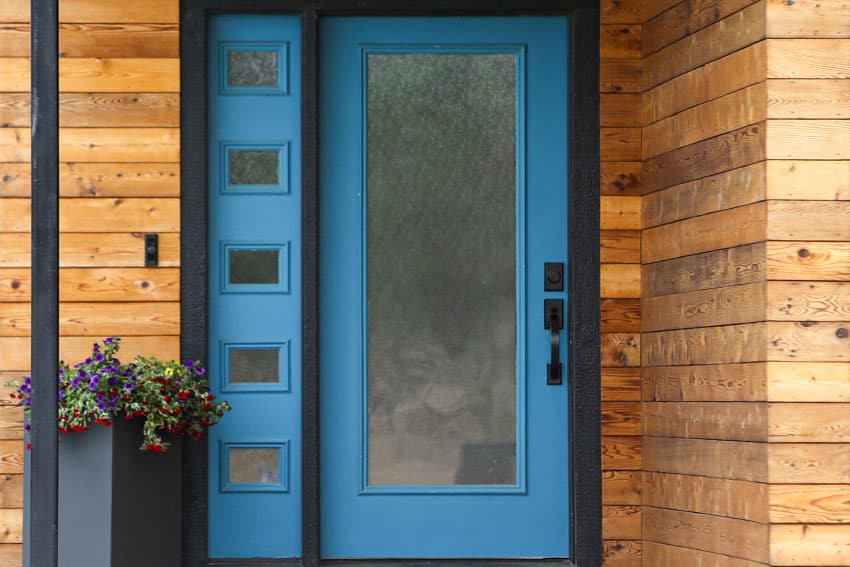
Let’s face it: glass doors (however durable they may be) will seem fragile, maybe because of years of misconceptions or influences from TV shows and movies.
While it’s true that standard ones can easily shatter, some are not easily breakable. To be sure, though, securing them properly is the best thing to do.
To secure the door, you can choose from the following options:
• Security window film
• Polycarbonate glazing shields
• Bars or grills
• Laminated security glass
You can base your choice on aesthetic preferences and security needs. For example, while metal grills and bars are the most traditional and common way to reinforce doors, they are not aesthetically friendly and can feel quite restrictive.
This is different if you choose to apply a security window film on top of the doors. While it may not prevent it from actual breakage due to impacts, the film will hold the shards together in place.
Laminated security glass, on the other hand, offers sturdy and durable support to the doors and actually resists impacts. The glazing shields are similar to this material, though more powerful and virtually unbreakable.
See more related content in our article about front door colors on this page.

